In the first year of the pandemic, I hauled my cookies a couple of times out to Montclair, California—about 45 miles east of where I live—to catch a movie at Mission Tiki Drive-In (which unfortunately closed in 2023).
That's how I first became interested in the Bowlium bowling alley—which was fortunately nearby but unfortunately closed for COVID-19.
 *photo taken 2020
*photo taken 2020"The prominence of the building, which makes it clearly visible from the street on the parking lot's far side," writes Alan Hess in his book Googie Redux, "shows the importance of bowling alleys as community centers in the new suburban areas of the 1950s."
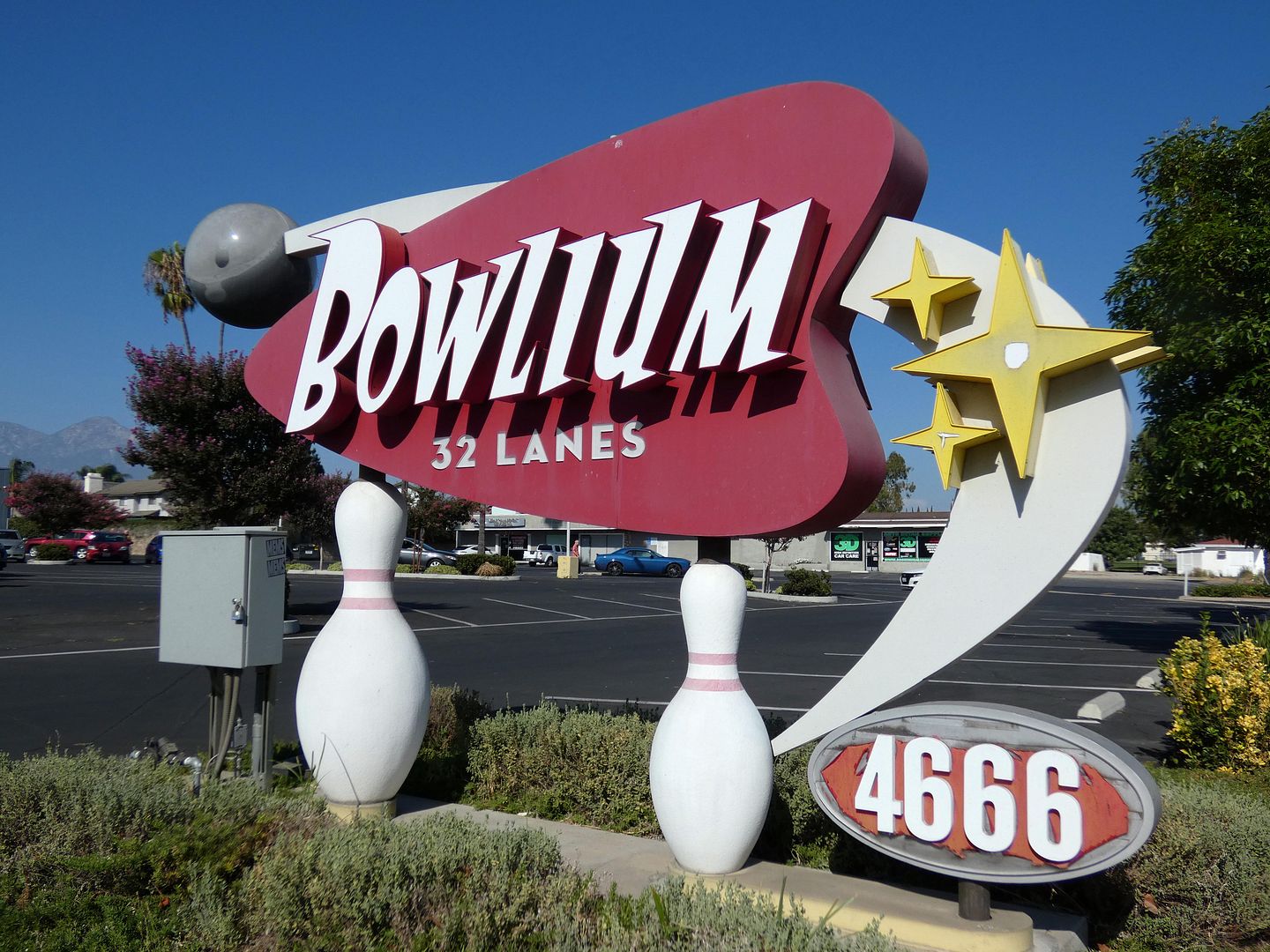
Adding to its prominence and visibility was a 50-foot sign that used to stand by the roadside—but I missed out on seeing that, as it was demolished in 1999. A much more diminutive sign replaced it, and stands there today.
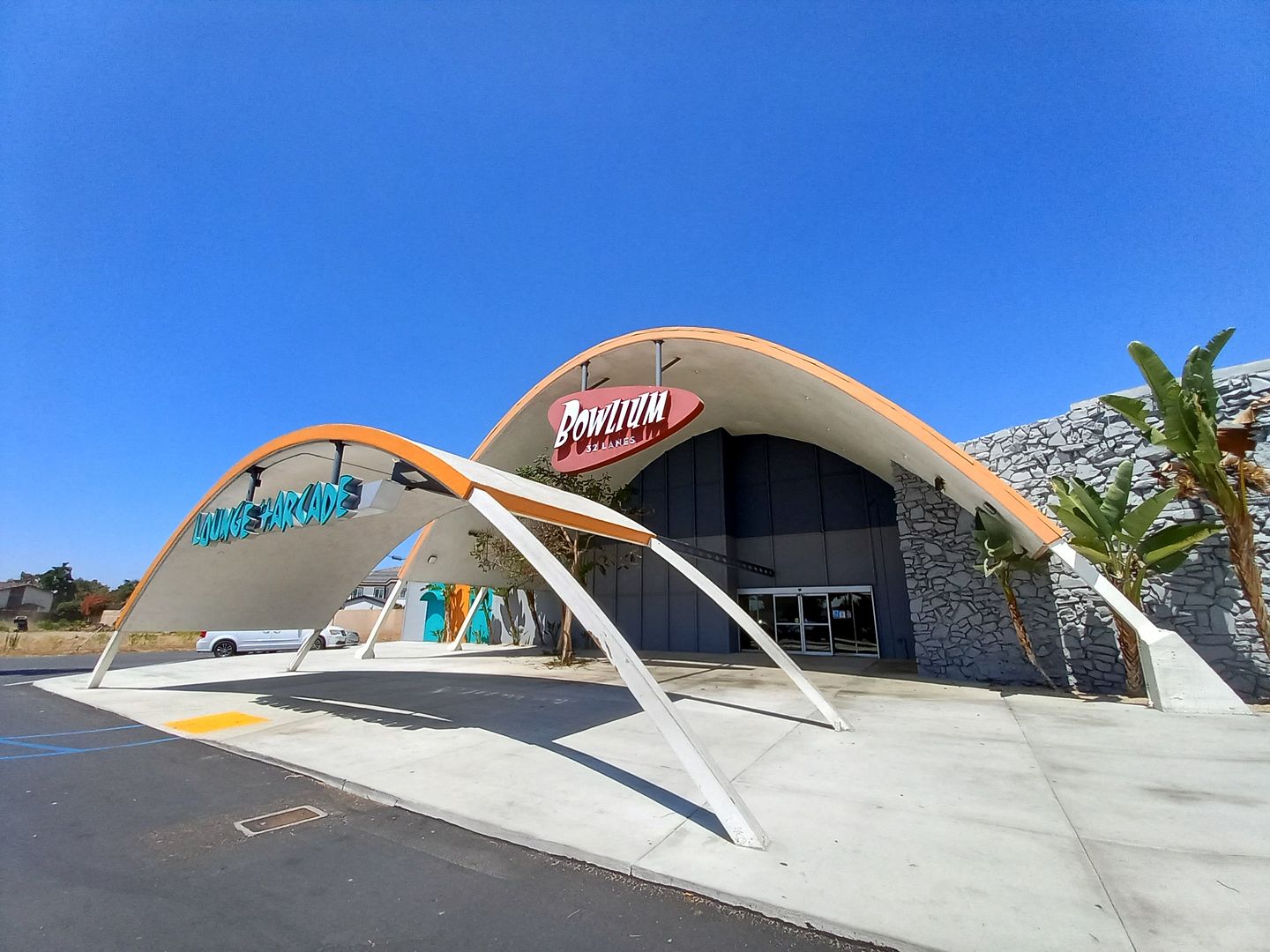
It was the work of the architectural team of Powers, Daly, and DeRosa—frequently credited just to Pasquale "Pat" DeRosa, who also designed Covina Bowl and Long Beach's Java Lanes.
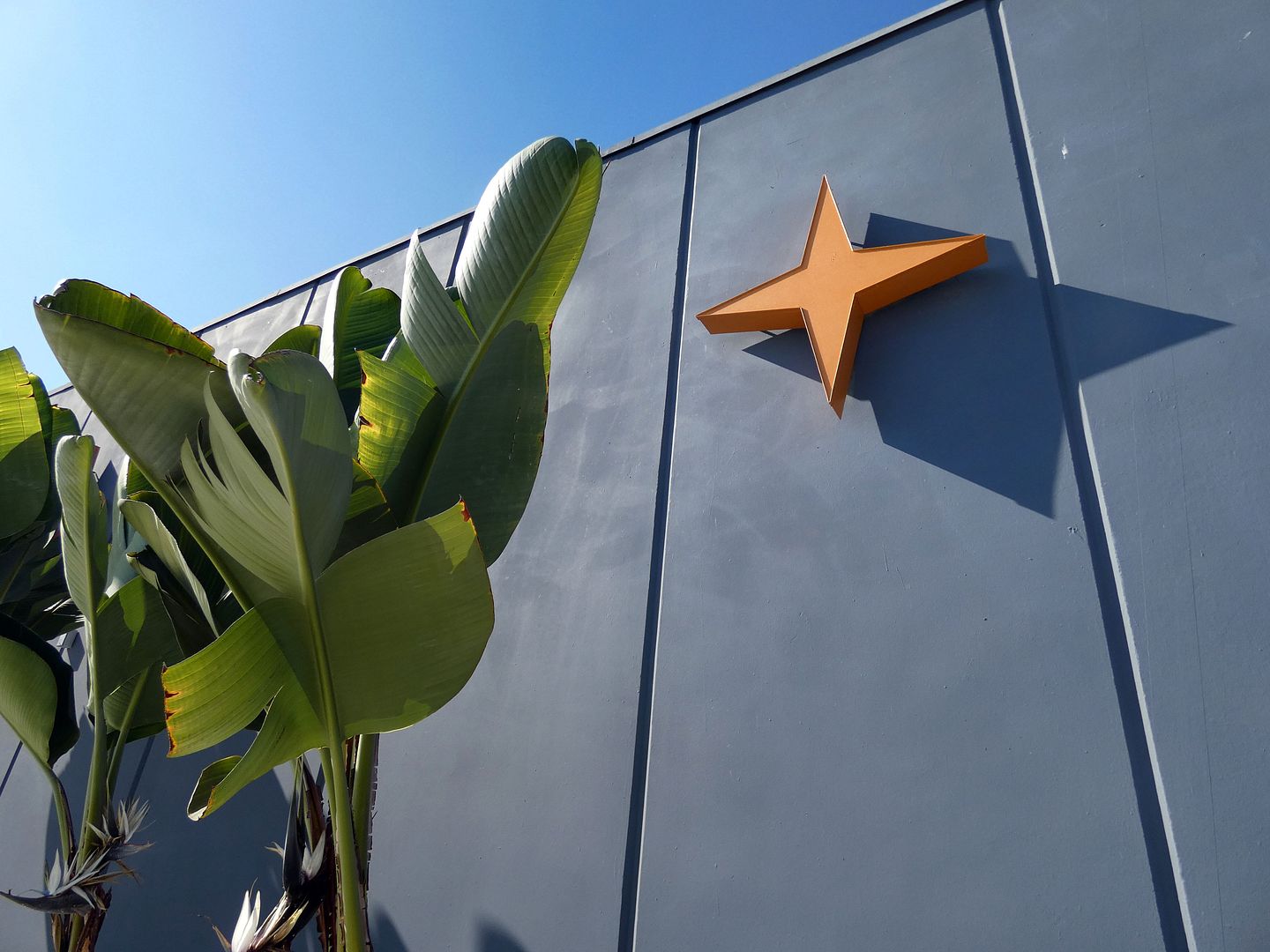
Having originally opened in 1958 (in what was then known as the city of Ontario), it's considered the oldest surviving bowling alley in California's Inland Empire—although it's seen its share of changes, including the painting the façade from yellow to slate gray.
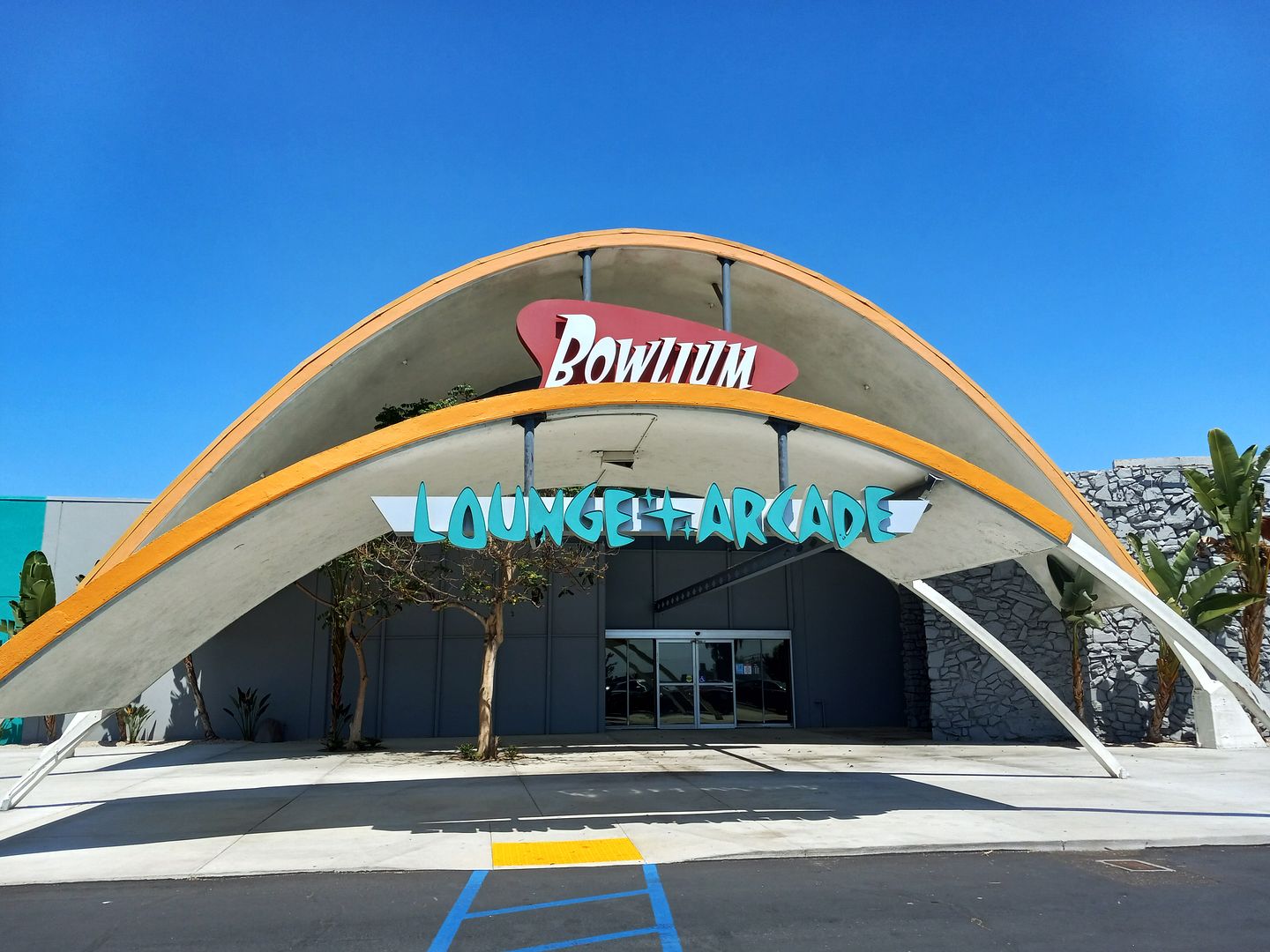
The two parabolic concrete canopies are original, as is the stone wall next to the front door (sadly also painted gray)...
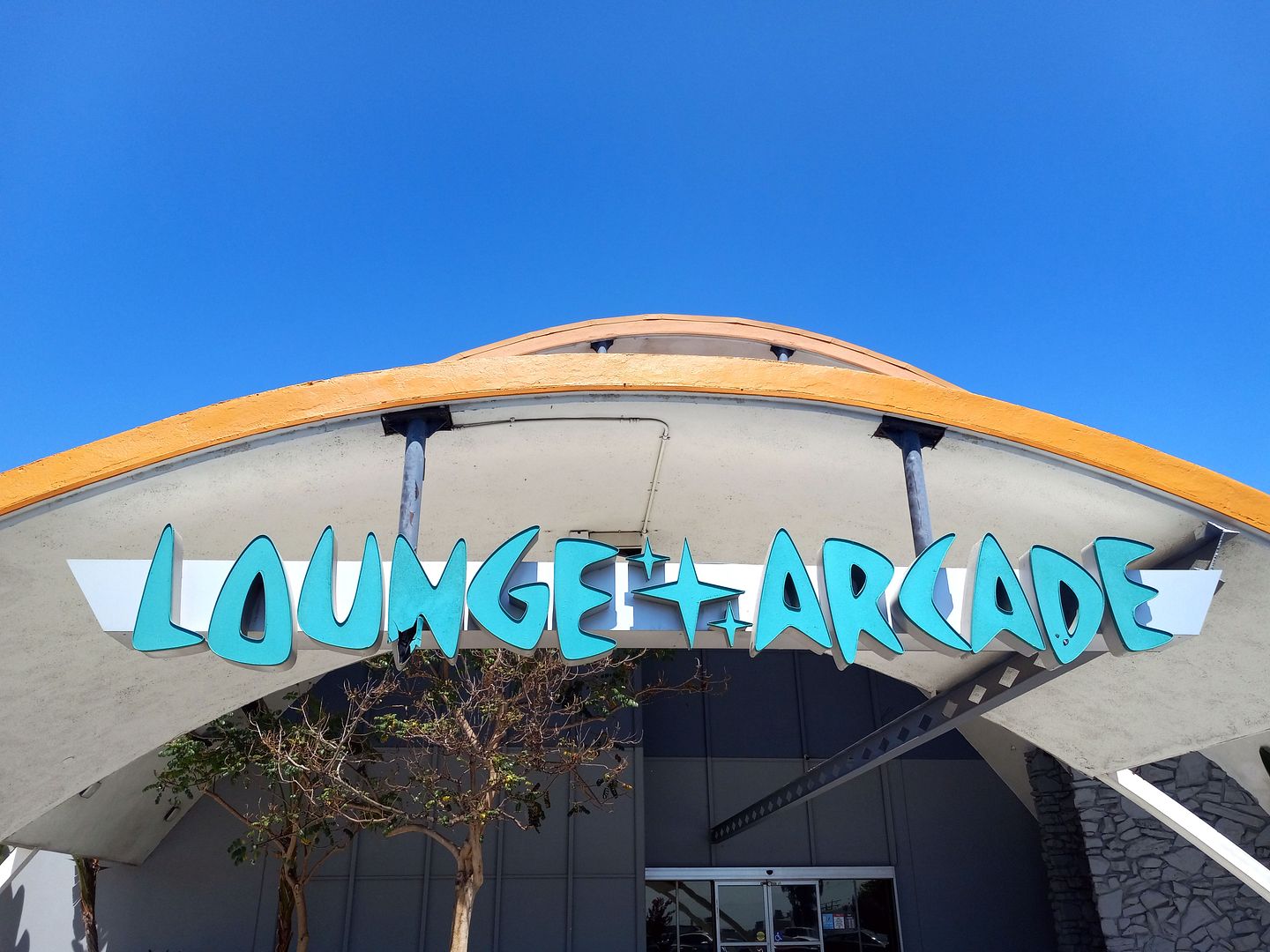
...but some groovy, vintage-inspired signs have been added here as well.

I finally had the occasion to actually go inside Bowlium and bowl there, thanks to an event celebrating the release of the book Bowlarama: The Architecture of Mid-Century Bowling by Chris Nichols and Adriene Biondo.

I was so happy to see the bowling alley so well cared-for, with many updates that kept the historic and retro feel of the place.

Now, I'm a terrible bowler—but I love it, so I bowled as part of the team "Lickety Splits." Too bad Bowlium doesn't still provide free instruction in the afternoons, like it did in 1958.

With 32 lanes, fast-as-lightning pin-setters and ball returns, and well-oiled mechanisms that keep the bowling balls from getting stuck, it makes it easy to enjoy a full 10 frames or more even if your throw doesn't have enough oomph.

In fact, it was this "automation" thanks to AMF machinery—plus automatic "Telescorers"—that made Bowlium one of the most modern "bowling emporiums" of its time, according to a 1958 article in The Daily Report.

But the whole idea behind bowling alleys was—and is—that they're not just for bowling. In the case of Bowlium, they've got a little coffee shop/diner serving up fast casual food (chicken fingers and burgers and the like) that you can bring to your lane or sit and enjoy right there.

There's a cocktail lounge, too, of course—now known as the "Splits Lounge," although upon Bowlium's opening it was the "Coral Reef Lounge" (part of the "Coral Reef Room" that included the coffee shop, a sit-down restaurant, and the bar).

Newspaper mentions of it dry up after 1974—but it once played host to Easter dinners and New Year's Eve parties with live bands. In the 1960s, it held Wednesday lunchtime fashion shows.
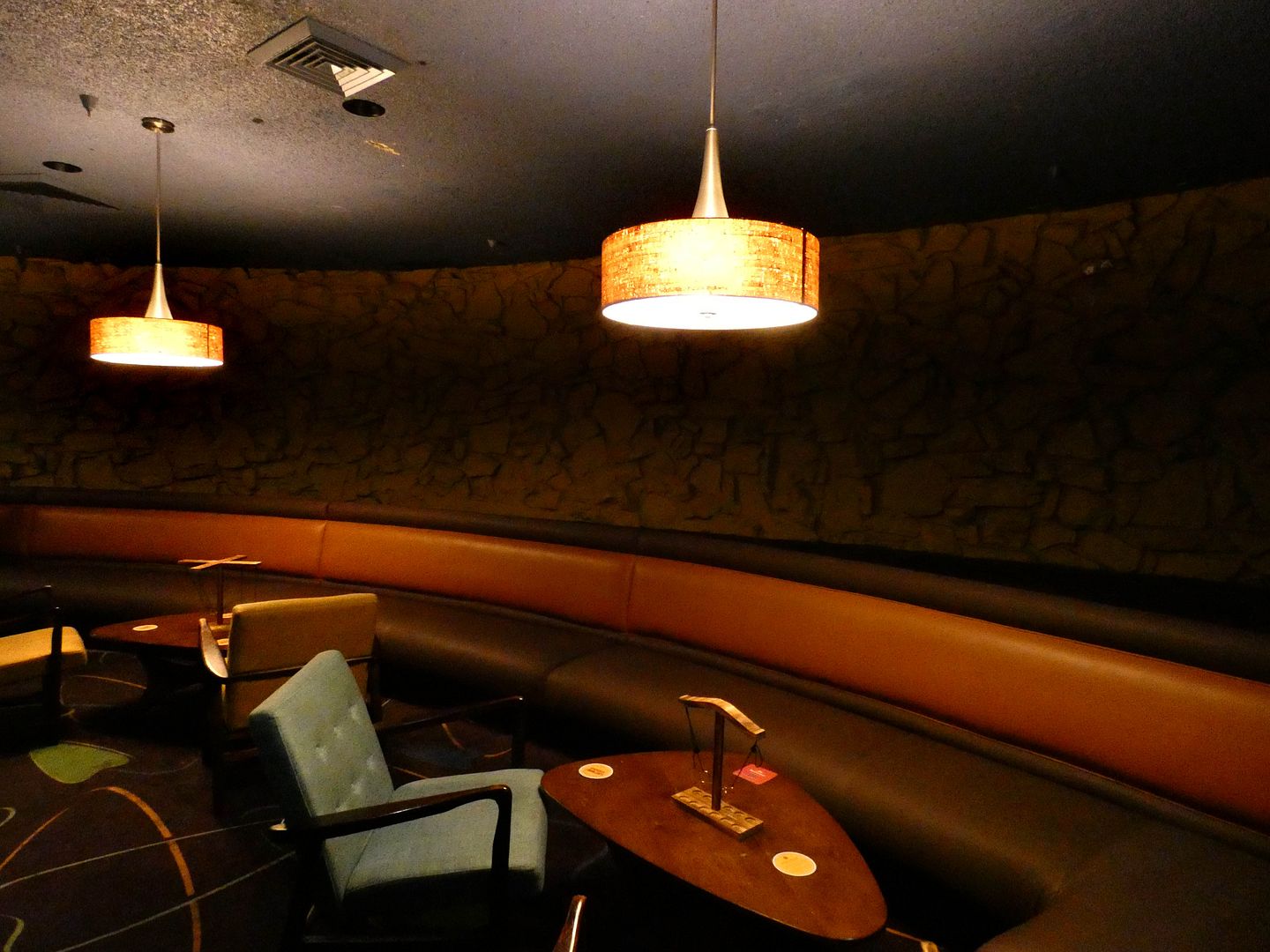
Maybe that was for the "housewives bowling leagues," which also spawned the creation of onsite daycare facilities—including a playground attended by nurses and featuring clown performers.

Like many other bowling alleys of the time, Bowlium used to be open 24 hours a day. There was literally that much demand for bowling—and developers couldn't build enough bowling alleys fast enough.
In 1971, they were advertising Monday night as "Poverty Night" and offering "extra special reduced prices."
Today, you're lucky to see a full bowling alley during peak hours on a Friday night—although there are glimmers of hope, even if that means "luxury" bowling places opening up in malls and pricey places like Highland Park Bowl serving the fanciest cocktails and pizza you've ever had.
I've spent too long living in Southern California and missing out on the opportunity to bowl at our vintage alleys before they close—like All Star Lanes in Eagle Rock (closed 2023), Covina Bowl (closed in 2017), Mission Hills Bowl (closed 2015), AMF Bay Shore Lanes (closed 2015), and I'm sure countless others that have shuttered since I moved here in 2011.
I'm glad I've already had the chance to knock down some pins at Pickwick Bowl (before it closed and was demolished in 2023), Montrose Bowl (before it was renovated in 2022-3), and Palos Verdes Bowl (before it was demolished in 2021).
And I've still got a few left to explore.
*All photos taken 2024 except where noted.

No comments:
Post a Comment